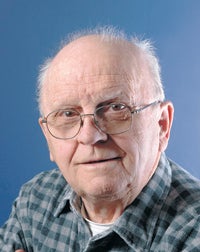The Albert Lea Colony goes west
Published 9:14 am Friday, August 19, 2011
All during its years of existence, people in the Albert Lea area have gone elsewhere for various reasons. Some local folks go to Arizona, Texas and even Alabama for the winter months. Not long ago the museum’s librarian, Linda Evenson, found a rather long list of area people who were living in the Twin Cities years ago. They were members of a special club based on once living in Albert Lea. Also, some folks go further north for the summer months.
There’s also a rather large photo and wide range of former residents who were living in south California in 1931 which is now part of a museum exhibit.
When museum volunteer Anita Lotts did the research on the local ties with the communities of Gig Harbor and Tacoma, Wash., she used the word colony for a group of area folks who moved to the Puget Sound region.
She made a list of 20 individuals and families who went west by railroad in the late 1880s. Before these folks are listed, I want to stress that they did not go as a group. Instead, they went at different times. In some situations one person might go out west to check out the situation, then return to Albert Lea for the rest of the family or friends.
Now here’s that list: Dr. A.M. Burnham family, Hans E. Knatvold family, Major Frank Hall family, Powell family (Ida Hall), George A. Parker, Ed Parker family, Bunk Bickford family, A.H. Bartlett, J.H. Parker, Ozro Fobes, E.S. Prentice family, Cline Wannemaker, E.E. Budlong, George Hyatt, Capt. George T. Gardner, Gunder O. Gunderson family, Judge Ira A. Town family, Dr. M.M. Dodge family, L.P. Lock family and the Van Vechten family.
Some of these people went west to become a part of the operations of the Gig Harbor Lumber Co. Several years later when the lumber firm went out of business, a few remained in Gig Harbor and the majority soon ended up in nearby Tacoma or other parts of western Washington.
In a previous column I mentioned that Gig Harbor and Tacoma were only about 11 miles apart. However, between those localities is a portion of Puget Sound and especially a place called Tacoma Narrows. As a result, travel from one locality to the other had to be done by ferry or watercraft. A trip by land involved going around the south end of Puget Sound through Olympia, a journey of nearly 100 miles.
During July 1940 the travel problem between the two localities was solved with the opening of the mile-long Tacoma Narrows Bridge. This particular bridge soon earned the nickname of “Galloping Gertie” because poor engineering resulted in the roadbed trying to twist during high winds. This nickname became a reality on Nov. 7, 1940, when the bridge collapsed.
A replacement bridge was opened in October 1950. More traffic resulted in a new matching bridge being completed in 2007. Now the 1950 bridge is for westbound traffic and the 2007 bridge is for eastbound traffic.
Despite the fact that Gig Harbor was originally platted in 1888 by former Albert Lea resident Dr. A.M. Burnham, this community wasn’t incorporated until July 12, 1946. At the present time there are about 7,000 people living in Gig Harbor.
Special thanks go to museum volunteer Anita Lotts for providing both her research material and the inspiration for this and the three previous columns.
Cornstalk comment
One of my future research projects is based on finding out where the name of Machinery Hill at a fair originated. Let’s just see what evolves.
With just three exceptions, Ed Shannon’s column has been appearing in the Tribune every Friday since December 1984.


